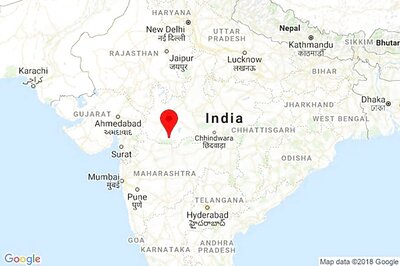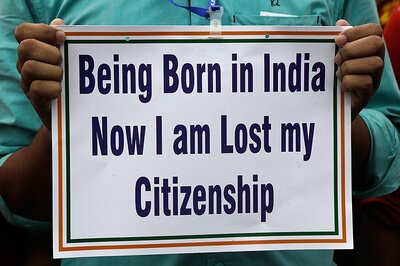
views
In a horrific incident of bonded labour in Bihar’s Motihari, 37 people – 13 women, 12 men and 12 children — were found to be tortured, manhandled, starved, with no medical help or money at a brick kiln in Kesariya. The labourers, who were brought from Amroha, Muradabad and Sambhal districts of Uttar Pradesh last week, have now been rescued.
One of the labourers somehow managed to contact Motihari superintendent of police (SP) Kumar Ashish and told him that they were stuck in the kiln for many days without food, shelter and medication.
CNN-News18 got an exclusive audio clip of the conversation between the labourer and SP in which the labourer painfully describes the ill treatment by the brick kiln owner, Niteshwer Mishra.
“We were manipulated and brought here from UP. Neither are we allowed to go out, nor are we given proper food or shelter. Our families are tortured when we ask for our hard-earned money. They beat us up and our women are manhandled. They even refuse to give medicines to our ill children. Please save us, we need your help.”
Kumar said Mishra has been questioned in the police station and has been summoned by the labour department on Tuesday. After a thorough inquiry, further action will be taken and a first information report (FIR) will be lodged accordingly. Meanwhile, all 37 have been sent to their homes and they have been given Rs 38,000 as their labour charges for the days they worked, the SP told CNN-News18.
On the other hand, Mishra claimed he had paid an advance of Rs 2,30,000 to one contractor from Muradabad named Rajkumar. He had also paid the fare to the labourers and Rs 30,000 for their ration.

While the prompt action by the SP has brought relief, it raises a lot of questions regarding bonded labour, which although abolished three decades ago, continues to exist.
WHAT IS BONDED LABOUR?
A person becomes a bonded labourer when their labour is demanded as a means of repayment for a loan. The person is then tricked or trapped into working for very little or no pay. Bonded labour is prohibited in India by law vide Articles 21 and 23 of the Constitution.
Internal forced labour constitutes India’s largest trafficking problem; traffickers use debt-based coercion (bonded labour) to compel men, women, and children to work in agriculture, brick kilns, rice mills, embroidery and textile factories, and stone quarries.
THE BONDED LABOUR SYSTEM (ABOLITION) ACT, 1976
The Act was brought into effect to abolish the system of bonded labour to not only prevent physical exploitation of people belonging to weaker sections, but also to ensure equality and right to life as enshrined under the Indian Constitution.
In 2017, a brick kiln owner, who was accused of trapping and abusing 12 labourers, was found guilty under India’s Bonded Labour System Abolition Act (1976) and Section 370 of the penal code covering human trafficking.
SC’S OBSERVATIONS ON BONDED LABOUR ACT
To attract Section 16 of Bonded Labour Act, there must be force and compulsion on part of the accused.
A bench of Justices AS Bopanna and PS Narasimha in 2019 observed: “For attracting the provision of Section 16 of the Act, the prosecution must establish that an accused has forced and compelled the victim to render bonded labour. This force and compulsion must be at the instance of the accused and the prosecution must establish the same beyond reasonable doubt. Similarly, under Section 17 of the Act, there is an obligation on the prosecution to establish that the accused has advanced a bonded debt to the victim.”
Read all the Latest News India and Breaking News here


















Comments
0 comment